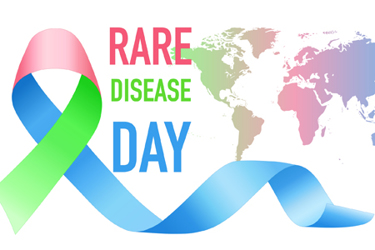New Resources To Optimize Therapy Development
By Amy Nicole Nayar, PharmD, MS HEOR at Novartis Gene Therapies

Collaboration is an undeniable strength of the rare disease community, as evidenced by the celebration of Rare Disease Day on February 28. For cell and gene therapy companies, it’s a reminder of the opportunity to increasingly collaborate with patients. This year, I hope that you not only recognize Rare Disease Day, but also use it to commit to collaborating more deeply with the patient community you serve. Here’s why and how.
De-risking Therapy Development
Patients are helping to drive progress by reshaping therapy development. Because the unmet need is so great (there are 6,000+ rare diseases without an approved treatment), we have a collective responsibility to develop platforms and standards that reduce the cost and operational barriers of gene therapy development. The Accelerating Medicines Partnership® Bespoke Gene Therapy Consortium aims to streamline regulatory requirements for the FDA approval of gene therapies, including developing standardized approaches to preclinical testing, and viral vector manufacture. This collaboration is designed to speed the development of customized gene therapies that could treat the millions of people affected by rare diseases.
Adapting to Patient Needs
Bringing patients into our research and development process in more meaningful ways requires planning. As we navigate hybrid trial designs, cell and gene therapy companies should expect and account for considerable edits in clinical trial protocols based on patient input. We are learning to engage early on, well before the protocol is written. This is typically done under appropriate collaborative engagements with patient organizations, patients, or caregivers. Additionally, it’s important to ensure that the perspectives that inform our work appropriately reflect the range of diversity in the patient population.
Embracing New Data Sources
Patient communities are collecting real-world data to support regulatory decision making and inform access decisions through consortia like RaDar, RareX, CoRDS, IAMRARE, PEER, and All of Us. By harnessing the power of this data, we hope to improve the chances of successful approvals and access to transformative treatments in the future.
Leveraging Resources
To inform the understanding of how FDA guidances can be applied to development of therapeutics for rare diseases, the EveryLife Foundation for Rare Diseases joined with the National Health Council, BIO, and PhRMA in a multi-stakeholder, collaborative effort to assess these guidances through the lens of rare disease development. A series of four virtual “PFDD Guidance Compendium” workshops, held between June and October 2021, convened nearly 100 leaders to consider the application of guidances across four lifecycle stages of medical product development for rare diseases. These discussions informed creation of the Guide to Patient Involvement in Rare Disease Therapy Development – a comprehensive resource detailing how patient perspectives can be elicited and applied to leverage opportunities and mitigate challenges. The Appendix of the Guide presents specific considerations for each stage of therapy development from research through post-marketing.
“None of us is as smart as all of us.” – Ken Blanchard
True growth for our industry lies in knowing that we don’t always have all the answers. As we openly share ideas with patients and learn from failures and successes, we will get better at decision making and in driving innovations forward. I’m so grateful to be a part of this larger community, setting new precedents for what collaboration can be. We’re opening up the dialogue with external stakeholders – patients, as well as regulators and payers. We’re approaching these conversations with honesty and transparency, which helps to build mutual trust and respect. As we navigate through these changes in how and when we work together, we try to remember that, if engaging early and often feels risky, the risk of not doing so is far greater – for all of us.
Amy Nicole Nayar, PharmD, MS HEOR at Novartis Gene Therapies
 Working to leave a legacy of families whose lives are less burdened by disease
Working to leave a legacy of families whose lives are less burdened by disease
I have witnessed first-hand the difference that a transformative therapy can have on a young family. That experience motivated me to drive life-changing advancements in patient care. I worked on gene therapy discovery while I pursued my PharmD, and then earned a Master’s degree in Health Economics and Outcomes Research. Over 14 years at Pfizer, I served across Access, Medical, Commercial, and Public Affairs roles, gaining insight into how the industry needs to collaborate with all parts of the healthcare system to create solutions. I established the European Access Support Team and grew the Worldwide Alliance Development function at Pfizer to be 150 colleagues strong. I created an External Stakeholder Strategic Partnerships function to bring vaccines to patients in Emerging Markets. I’ve since led Advocacy and Communications teams at Porter Novelli, AbbVie, and AveXis, now Novartis Gene Therapies. My goal is to collaborate with stakeholders to create solutions that lead to quantum leap improvements in research, policy, and care. I’m honored to work with the rare disease community to harness the incredible opportunities we are now seeing come to life that disrupt patient care as we have known it.
